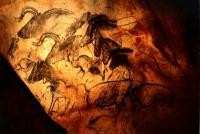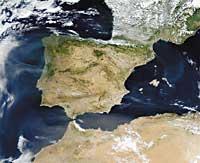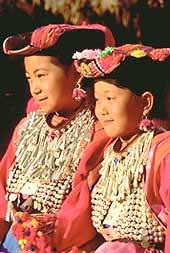Paleolithic in groups
2000/12/05 Roa Zubia, Guillermo - Elhuyar Zientzia
The two main migratory movements that occurred in the Paleolithic era have been identified in the traces of the human genome. For this, several anthropologists have used two approaches. Italian researchers Ornella Semino and Giusseppe Pasarino have followed the medium of the Y chromosome. Scientists from another group have compared mitochondrial DNA. The Y chromosome is transmitted through men and mitochondrial DNA through women.

The hominid branch has its origin in Africa, where there is no doubt. Subsequently, the pioneers of human beings dispersed around the world and new species and subspecies appeared. For example, Neanderthal Man emerged from European humans. In this respect, it can be said that these hominids with strong complication were true Europeans. However, our exile was born in the transformations of Africa and gradually entered Europe. We are mere invaders.
Time of colonization
In Europe, the population of Homo sapiens sapiens (our population), due to two large migrations, increased considerably in the Palaeolithic. They have followed the footprints of both migrations using the Y chromosome method, in which genetic sequences of DNA have been identified.
The first migration was 30.000-35,000 years ago and is related to the culture of the Aurignac. According to studies, these were people who left Asia and came from north to west Europe. It is noteworthy the disappearance of the Neanderthal in those times. Its last traces have been found in the south of the Iberian Peninsula, far from the migratory routes of modern man.
Aurignac's culture was very fruitful in art and tools. Several prehistoric sites of Euskal Herria belong to this culture, such as that of Isturitz. In Europe culture was widespread and 80% of European men today have genetic information disclosed in this migration.
The researchers have explained that the second migration comes from another famous culture, the Gravette. About 25,000 years ago the current Turkey was toured and spread across the Balkan peninsula.
However, researchers have been cautious and have presented their doubts. At this time there were many cultures scattered throughout Europe. In addition, the adherence of genetic information to specific cultures is very dangerous, since there are many variables involved.
The post-migration status can be estimated based on the distribution of genetic characteristics. The Aurignac dominated western and southern Europe, while the Gravette population predominated in the east and central. This balance remained until the last glaciation, about 24,000 years ago. But climate change forced man to be protected. According to the study, those of the Aurignac culture met in the Iberian Peninsula and Ukraine and those of the Gravette in the Balkans. The retreat of the glaciers caused a rapid expansion of both populations. According to anthropologists, this diffusion explains why the genetic characteristics of Aurignac are so abundant.
9,000 years ago, in the Neolithic era, a new migration occurred. He left the Middle East and researchers believe it is related to the expansion of agriculture. This hypothesis fits the archaeological data collected in these territories. However, this migration did not leave as much genetic characteristics as that of the Palaeolithic. Researchers have only found it in 20% of European men. This indicates that perhaps the Neolithic migration was not so great, but other explanations have also been published.
The genes of women
The study of mitochondrial DNA transmitted by women also offers interesting results. In general, the conclusions are the same, but the genetic characteristics found with this method present a new distribution.
This data, according to experts, can be an indicator of the difference between behaviors between men and women. In many societies women had to change from place to place to meet the family of man.

Gai honi buruzko eduki gehiago
Elhuyarrek garatutako teknologia






